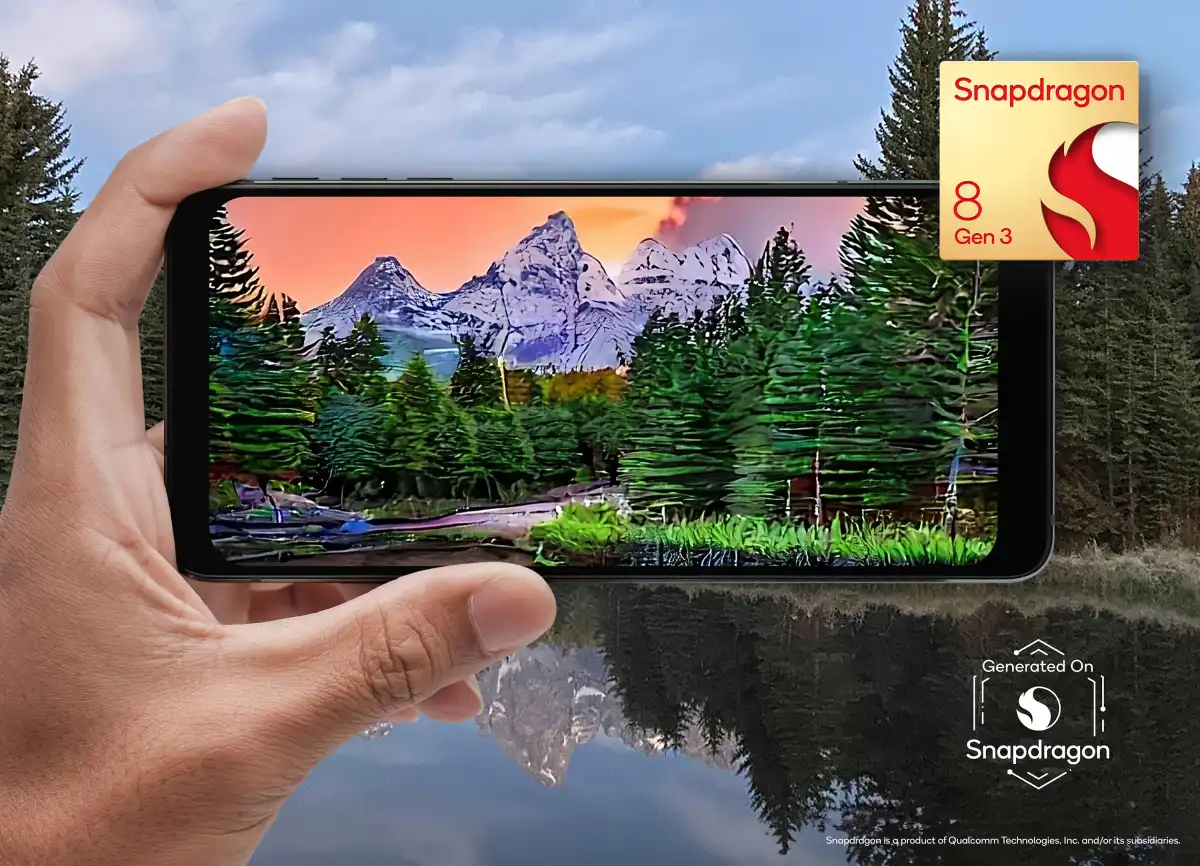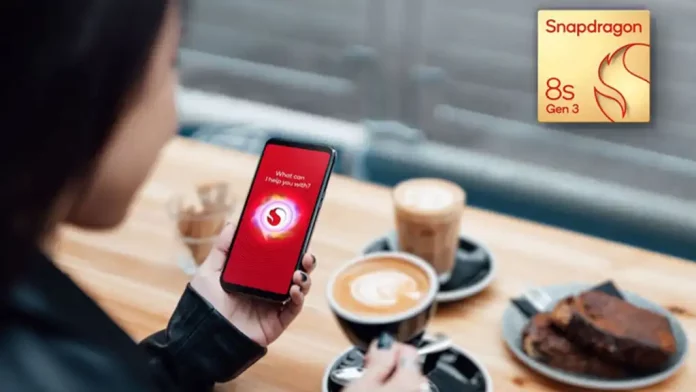Snapdragon 8s Gen 3 : The business manufactures CPUs for Android phones of different prices, but their flagship SoC (System on a chip) receives the most of the attention.
That’s definitely true for the Snapdragon 8 Gen 3, which debuted in 2023 and has since been used in a number of high-end devices.
However, Qualcomm has subsequently introduced a replacement, the Snapdragon 8s Gen 3, which is aimed at mid-range handsets instead. Here’s what you should know about both chips.
When will the first Snapdragon 8 Gen 3 phones launch?
Qualcomm unveiled the Snapdragon 8 Gen 3 at its Snapdragon Summit in Hawaii on 24 October 2023.
It made its debut on the Xiaomi 14 series, which were introduced in China only two days later. The processor has now been featured in a number of premium Android phones, including the Samsung Galaxy S24 series, OnePlus 12, Honor Magic 6 Pro, and Asus Zenfone 11 Ultra.
On March 18, 2024, a new version of this processor was announced: the Snapdragon 8s Gen 3. It’s intended for higher mid-range smartphones.
No particular phones employing this chipset have been announced yet, but Qualcomm claims production will begin by the end of March. Honor, iQOO, Realme, Redmi, and Xiaomi will all launch Snapdragon 8s Gen 3 devices in the near future.
What are the Snapdragon 8 Gen 3 specs and features?
Let’s talk about both versions of the Snapdragon 8 Gen 3, starting with the regular, flagship chipset.
Snapdragon 8 Gen 3
The Snapdragon 8 Gen 3 employs 4nm process technology, as opposed to 3nm, which was rumored and used by Apple for the A17 Pro. Nonetheless, Qualcomm’s latest Kryo CPU and Adreno GPU provide even higher performance.
The Qualcomm Kryo CPU is based on a 64-bit architecture and features one Prime core capable of reaching speeds of up to 3.3 GHz. It uses Arm Cortex-X4 technology, with five ‘Performance’ cores (up to 3.2 GHz) and two ‘Efficiency’ cores (up to 2.3 GHz). The new processor outperforms the Gen 2 by 30% and consumes 20% less power.
The Adreno GPU is 25% faster, 25% more efficient, and has a 40% increase in Ray Tracing capabilities. These performance upgrades also result in a 10% total power reduction, so you won’t have to worry about battery life.
The 8 Gen 3 can handle on-device display resolutions of up to 4K at 60Hz and QHD+ at 144Hz. It also supports external displays with resolutions of up to 8K at 30Hz and 1080p at 240Hz, providing a flexible viewing experience.

To increase mobile gaming performance, the processor has Snapdragon Game Super Resolution, which allows game scenes to be upscaled to 8K on external monitors. The Adreno Frame Motion Engine 2.0 also provides higher-quality scenes with doubled frame rates, all while using the same amount of power.
The Snapdragon 8 Gen 3’s capabilities will appeal to both gamers and photographers.

The Spectra Image Signal Processor supports real-time semantic segmentation for picture and video processing (up to 12 layers). It supports high-resolution cameras, including 108-megapixel and 200-megapixel single-camera models. This chipset is also good at HDR video capture, having the capacity to capture 8K HDR footage at 30 FPS and 4K video at 120 FPS.
It offers far better picture and video editing experiences than previous versions, as well as voice-activated generative AI. Semantic Segmentation technology enables real-time optimization of many components of your images, resulting in increased detail, brightness, and authenticity. Even in low-light circumstances, AI-powered Night Vision video capture should have a significant impact.
The chipset also includes Truepic photo capture with the C2PA standard and Arcsoft’s Video Object Eraser for video capture, which allows you to delete undesired objects from your recordings with a single tap.
Creators may also use the Vlogger’s View function to broadcast both selfie and rear camera videos at the same time. Photo Expansion also assists with naturally stretching photos beyond their original frame.
The Snapdragon 8 Gen 3 further demonstrates Qualcomm’s commitment to on-device generative AI.

Its AI Engine enables multi-modal generative AI models such as large language models (LLM), language vision models (LVM), and transformer network-based automated speech recognition (ASR) with up to 10 billion parameters, all of which operate on the device.
One of the most notable characteristics is the ability to swiftly make graphics. LLM models can also help your personal AI helper become more receptive. Furthermore, the Snapdragon 8 Gen 3 supports on-device personalization via the Qualcomm Sensing Hub.
The chipset provides up to 98% quicker Qualcomm Hexagon NPU performance, as well as a 40% increase in performance per watt. In addition, the Qualcomm Sensing Hub improves AI performance by up to 3.5x.
Qualcomm has also improved audio quality with the Snapdragon 8 Gen 3.
The Aqstic audio codec contains features such as spatial audio and head-tracking, ensuring an immersive audio experience.
Snapdragon Sound with Qualcomm Expanded Personal Area Network Technology (XPAN) ensures continuous lossless audio, whether you’re traveling or keeping connected to your phone. Another good addition is that gaming sound is synchronized to the millisecond, ensuring that there is no latency from onscreen activity to your headphones.
The Snapdragon 8 Gen 3 also provides enhanced connectivity.
It comes with the Snapdragon X75 5G Modem-RF System, which is 5G Advanced-ready. It is compatible with both 5G mmWave and sub-6 GHz, 5G standalone (SA) and non-standalone (NSA) modes, standalone mmWave, and mmWave-sub-6 dual connectivity. It also supports downlink rates of up to 10 Gbps and uplink speeds of up to 3.5 Gbps.
The Qualcomm FastConnect 7800 also supports Wi-Fi 7, with peak rates of 5.8Gbps. Additionally, Bluetooth supports aptX Voice, aptX Lossless, aptX Adaptive, and LE Audio.
Its 5G modem with an integrated AI tensor hardware accelerator offers 2.5x AI processing power compared to its predecessor. It also supports 24-bit 96 kHz lossless music over Bluetooth wireless technology.

Snapdragon 8s Gen 3
Qualcomm unveiled the Snapdragon 8s Gen 3 processor in March 2024, positioning it just behind its flagship predecessor in terms of functionality and predicted device pricing. The 8s Gen 3 is designed to make high-end functionality more accessible to mid-range phones.
The new chipset includes a GPU similar to the flagship model, the 8 Gen 3, but with somewhat less performance cores and frequencies. The primary core clocks at up to 3.0GHz, compared to 3.4GHz on the 8 Gen 3. It also has the previous-generation X70 5G modem (which still supports Wi-Fi 7) and hardware-accelerated ray tracing for improved gaming experiences.
What is most encouraging, however, is the fact that the chipset supports on-device generative AI models and large language models, even if they’re not as advanced as the Snapdragon 8 Gen 3.
This is likely to enable brands to implement advanced AI-based features into more affordable models, rather than being limited to flagship handsets, as is often the case currently.

Some phone manufacturers employ older chipsets in their more inexpensive models, but this may persuade them to utilize the Snapdragon 8s Gen 2.
Qualcomm’s tier structure now includes sub-categories, perhaps allowing for a future 8+ Gen 3. This is something we’ve seen happen with previous flagship processors.
Which phones use the Snapdragon 8 Gen 3?
Here’s the full list of the phones that feature with the main Snapdragon 8 Gen 3 and are available in the UK and/or US:
- Samsung Galaxy S24 (some markets)
- Samsung Galaxy S24 Plus (some markets)
- Samsung Galaxy S24 Ultra
- OnePlus 12
- Asus ROG Phone 8 Pro
- Asus Zenfone 11 Ultra
- Xiaomi 14
- Xiaomi 14 Ultra
- Honor Magic 6 Pro
- Motorola Edge 50 Pro
- Nubia Red Magic 9 Pro
Qualcomm says the Snapdragon 8s Gen 3 will be used by the following companies: Honor, iQOO, Realme and Xiaomi (including Redmi sub-brand). Devices are expected to be announced in the coming months, though none of those companies usually launch phones in the US.


